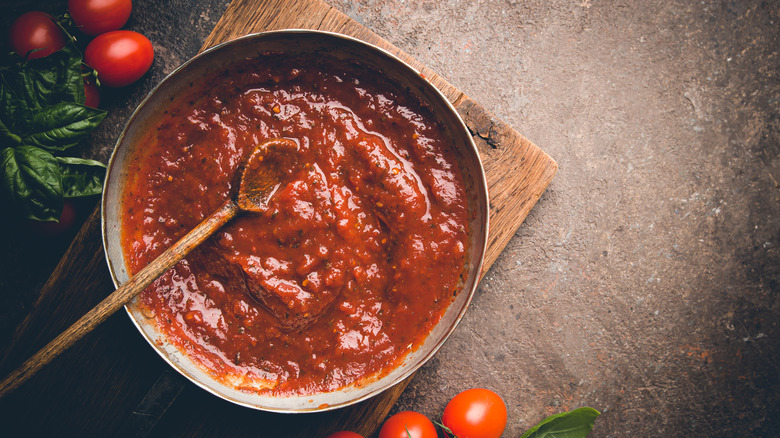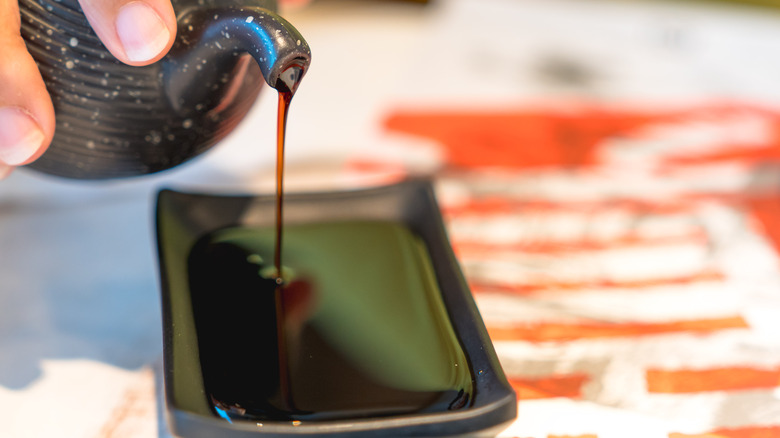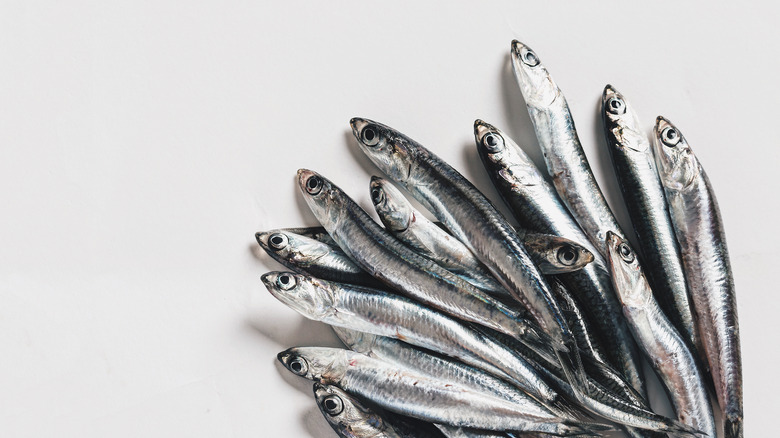The Ingredient That Will Change Your Tomato Sauce Forever
Correction 3/26/22: A previous version of this article named parmesan as a suitable swap for vegetarians. Parmesan contains animal rennet, which is not consumed by many who follow a vegetarian diet.
Wondering what you can use in your fridge to whip up dinner? When in doubt, pasta with tomato sauce is always a good backup plan. While tomato sauce and pasta will always be a classic coupling, this versatile recipe can also pair with eggs, fish, grilled cheese, curry, and more. Whether you are an amateur home chef or a culinary genius, flavorful tomato sauce is a staple recipe that everyone can and should know how to make.
While tomato sauce may be easy to make, finding a recipe that truly knocks your socks off can be challenging. Whether you like packing your sauce with veggies or blending in a slew of spices, there are many different takes on this recipe. If you feel like your current recipe is falling short of expectations, there's one secret ingredient you can add — fish sauce — that will take your sauce up a notch.
Adding fish sauce to your tomato sauce will take your dish to the next level
We've all sampled a dish and said, "something's missing." Frustratingly enough, and more often than not, we don't always know what that missing ingredient is. Whether you're simmering a big pot of bolognese, preparing a bright and fresh pomodoro sauce, or making classic marinara, if your tomato sauce lacks a little something-something, fish sauce may be just what it needs to give it some added richness and depth.
As the name suggests, fish sauce is made with fish. This sweet and salty blend derives from fish, typically anchovies, that have been fermented for months — sometimes even years, per Healthline. What results from this fermentation process is a brown sauce packed with glutamates. Because it is chock full of glutamates, adding fish sauce to your tomato sauce is similar to dropping a umami bomb in your dish.
Correctly incorporating fish sauce into your dish is all about timing. You will want to make sure that you gradually add this ingredient as your sauce simmers. Try adding in the sauce a teaspoon at a time until you reach the desired taste.
There are plenty of good alternatives to fish sauce
If you don't have any fish sauce lying around, parmesan cheese and anchovies both make good alternatives. While anchovies aren't as potent as fish sauce, they do make a good backup option for one simple reason: The primary ingredient in fish sauce is fermented anchovies. This means that adding the whole canned fish into your tomato-based concoction is the next best thing to fish sauce. To incorporate anchovies into your sauce, chuck the canned or jarred fish into your pan as you begin to cook down your onions and garlic. This will give the anchovies ample time to dissolve and allow this ingredient to smoothly integrate into your silky sauce, per MyRecipes.
As for the parmesan cheese? Josh DeChellis of the Italian restaurant Il Buco Alimentari recommends sprinkling some parmesan cheese into your sauce as it is still cooking, according to Thrillist. The cheese should be the final ingredient added to your simmering sauce. You should also certainly garnish your finished plate of pasta with as much parmesan cheese as your heart (and stomach) desires!
If you're a vegetarian or a vegan or the thought of fish sauce truly makes you want to run and hide, you can substitute this secret sauce ingredient with a store-bought vegan alternative (typically made from shiitake mushrooms) or whip up an alternative umami booster of your own from miso and toasted nori (finely ground).


